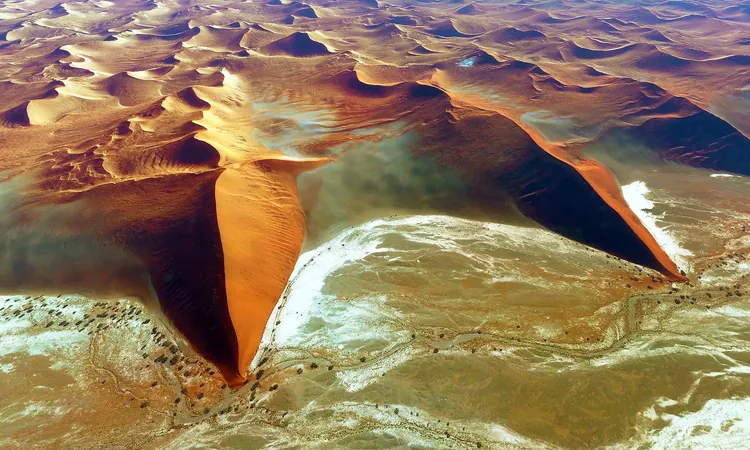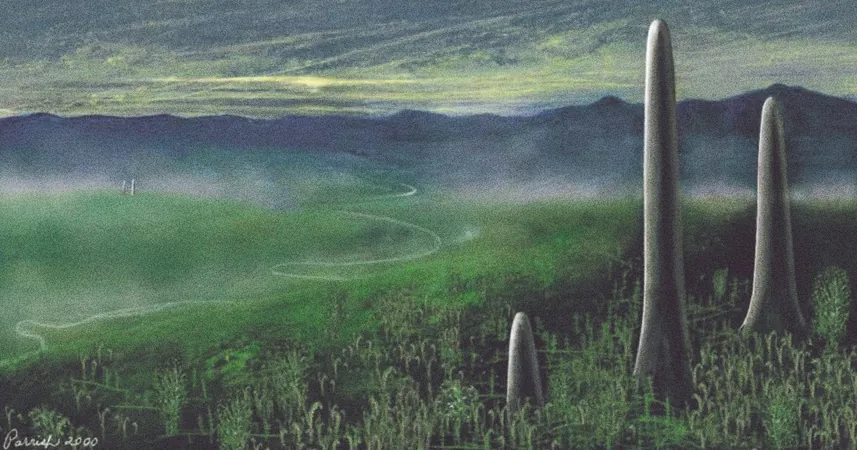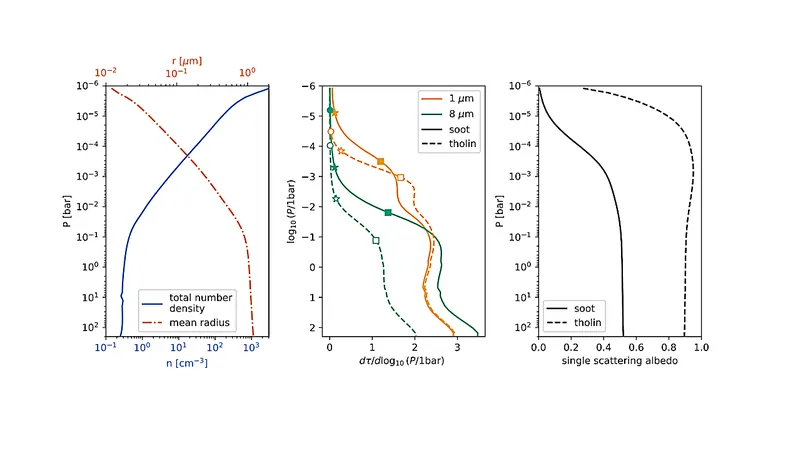
Star Dunes: The Stunning Desert Formations Unveiling Earth's Hidden Secrets
2025-03-29
Author: Yu
Sand dunes are among the most mesmerizing natural features on our planet, particularly in arid regions where they create spectacular landscapes. Among these remarkable formations, star dunes, sometimes referred to as pyramid dunes, reign supreme due to their towering heights and distinctive shapes.
Spanning across vast sand seas found in Africa, Arabia, China, and North America, star dunes are created in regions where winds blow from multiple directions, allowing sand to accumulate significantly. From a bird's-eye view, they display a striking star shape centered around a tall, pyramid-like structure with arms radiating outward.
One of the tallest star dunes is located in China's Badain Jaran Desert, soaring to an impressive height of approximately 984 feet, rivaling the height of famed landmarks like the Eiffel Tower in Paris.
Unlocking Geological Mysteries
Despite their prominence in contemporary deserts and even appearances on extraterrestrial bodies like Mars and Saturn’s moon Titan, star dunes have eluded scientists in the geological record. Their relatively obscure presence in ancient sandstone layers has puzzled researchers for years.
A breakthrough study led by Professor Geoff Duller from Aberystwyth University, alongside teams from Birkbeck and University College London, has begun to unravel the enigma of these hidden giants. By investigating the internal structure and formation rates of a star dune in Morocco, the study provides critical insights into why geologists have struggled to locate these dunes in historical deposits.
Revealing Hidden Patterns in the Sahara
In the Erg Chebbi region of southeastern Morocco, researchers focused on a star dune named Lala Lallia, which translates to "highest sacred point" in the Berber language. This impressive dune reaches about 328 feet in height and spans about 2,297 feet at its base, with the oldest layers dating back approximately 13,000 years, coinciding with the Younger Dryas, a notable cooling event in Earth’s climatic history.
Utilizing ground-penetrating radar scans, scientists discovered that Lala Lallia remained dormant for roughly 8,000 years. Artifacts of pottery found in the vicinity suggest that wetter climatic conditions, likely driven by an intensified monsoon, previously inhibited sand accumulation. However, with the onset of drier conditions, sand began to collect rapidly, leading to the dune’s present form. The findings indicate that Lala Lallia accumulated most of its size within the last millennium and is actively shifting westward at a rate of approximately 1.6 feet per year.
Innovative Techniques Yield New Insights
Professor Charlie Bristow from Birkbeck and UCL highlighted the significance of using ground-penetrating radar and optically stimulated luminescence (OSL) dating techniques in their research. These methods allowed researchers to gain a clearer understanding of the dune's formation timeline, particularly post-African Humid Period, revealing that these massive dunes may form much more quickly than previously believed.
“This research is a breakthrough because it addresses the long-standing mystery of why star dunes are absent from the geological record,” stated Professor Duller. “Thanks to new technologies, we can begin to uncover their secrets and appreciate how rapidly these stunning formations develop, moving at approximately 50 centimeters annually.”
Understanding Ancient Deserts and Natural Wonders
This groundbreaking research not only elucidates the absence of star dunes in older rocks but also offers a model for geologists to better identify similar formations concealed in underground layers. The unique internal layers of star dunes can closely resemble other dune types, making it challenging to differentiate them in fossilized states.
The study emphasizes the importance of understanding star dunes, as they shed light on ancient environmental conditions. By recognizing signs of varied wind directions, geologists can construct a more accurate picture of past climatic events, thereby enhancing our understanding of water management in current desert regions.
The implications of this research extend beyond geological history, potentially informing strategies for carbon storage and resource management in deserts. As scientists unveil the patterns of star dunes, they are poised to unlock chapters of Earth’s history that have long remained hidden beneath the sands.
The full study has been published in the journal Scientific Reports, promising to inspire further exploration into the dynamics of desert landscapes across the globe.
---
Stay tuned for more fascinating discoveries and insights from the natural world—subscribe to our newsletter for exclusive updates!






 Brasil (PT)
Brasil (PT)
 Canada (EN)
Canada (EN)
 Chile (ES)
Chile (ES)
 Česko (CS)
Česko (CS)
 대한민국 (KO)
대한민국 (KO)
 España (ES)
España (ES)
 France (FR)
France (FR)
 Hong Kong (EN)
Hong Kong (EN)
 Italia (IT)
Italia (IT)
 日本 (JA)
日本 (JA)
 Magyarország (HU)
Magyarország (HU)
 Norge (NO)
Norge (NO)
 Polska (PL)
Polska (PL)
 Schweiz (DE)
Schweiz (DE)
 Singapore (EN)
Singapore (EN)
 Sverige (SV)
Sverige (SV)
 Suomi (FI)
Suomi (FI)
 Türkiye (TR)
Türkiye (TR)
 الإمارات العربية المتحدة (AR)
الإمارات العربية المتحدة (AR)